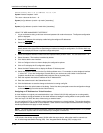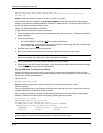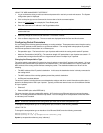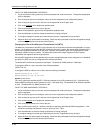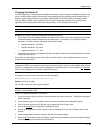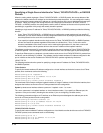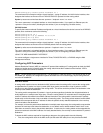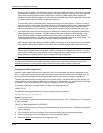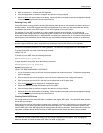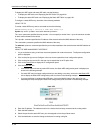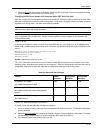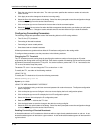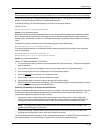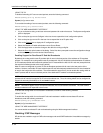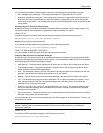
Installation and Getting Started Guide
address for the IP address. The ARP cache maps IP addresses to MAC addresses. The cache also lists the
port attached to the device and, if the entry is dynamic, the age of the entry. A dynamic ARP entry enters the
cache when the routing switch receives an ARP reply or receives an ARP request (which contains the
sender’s IP address and MAC address). A static entry enters the ARP cache from the static ARP table (which
is a separate table) when the interface for the entry comes up.
To ensure the accuracy of the ARP cache, each dynamic entry has its own age timer. The timer is reset to
zero each time the routing switch receives an ARP reply or ARP request containing the IP address and MAC
address of the entry. If a dynamic entry reaches its maximum allowable age, the entry times out and the
software removes the entry from the table. Static entries do not age out and can be removed only by you.
• If the ARP cache does not contain an entry for the destination IP address, the routing switch broadcasts an
ARP request out all its IP interfaces. The ARP request contains the IP address of the destination. If the
device with the IP address is directly attached to the routing switch, the device sends an ARP response
containing its MAC address. The response is a unicast packet addressed directly to the routing switch. The
routing switch places the information from the ARP response into the ARP cache.
ARP requests contain the IP address and MAC address of the sender, so all devices that receive the request
learn the MAC address and IP address of the sender and can update their own ARP caches accordingly.
NOTE: The ARP request broadcast is a MAC broadcast, which means the broadcast goes only to devices
that are directly attached to the routing switch. A MAC broadcast is not routed to other networks. However,
some routers, including HP routing switches, can be configured to reply to ARP requests from one network on
behalf of devices on another network. See
“Enabling Proxy ARP” on page 6-29.
NOTE: If the routing switch receives an ARP request packet that it is unable to deliver to the final destination
because of the ARP timeout and no ARP response is received (the routing switch knows of no route to the
destination address), the routing switch sends an ICMP Host Unreachable message to the source.
Changing the ARP Aging Period
When the routing switch places an entry in the ARP cache, the routing switch also starts an aging timer for the
entry. The aging timer ensures that the ARP cache does not retain learned entries that are no longer valid. An
entry can become invalid when the device with the MAC address of the entry is no longer on the network.
The ARP age affects dynamic (learned) entries only, not static entries. The default ARP age is ten minutes. On
routing switches, you can change the ARP age to a value from 0 – 240 minutes. You cannot change the ARP age
on switches. If you set the ARP age to zero, aging is disabled and entries do not age out.
To change the ARP age on a routing switch, use either of the following methods.
USING THE CLI
To modify the ARP aging parameter to 20 minutes, enter the following command:
HP9300(config)# ip arp-age 20
Syntax: ip arp-age <num>
The <num> parameter specifies the number of minutes and can be from 0 – 240. The default is 10. If you specify
0, aging is disabled.
USING THE WEB MANAGEMENT INTERFACE
1. Log on to the device using a valid user name and password for read-write access. The System configuration
panel is displayed.
2. Click on the plus sign next to Configure in the tree view to display the list of configuration options.
3. Click on the plus sign next to IP to display the list of IP configuration options.
4. Select the General
link to display the IP configuration panel.
6 - 28



